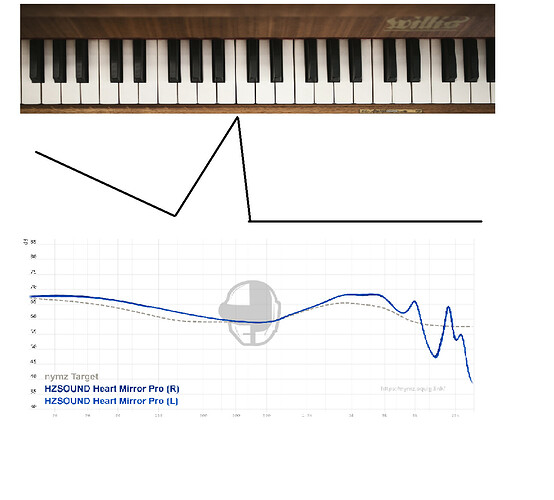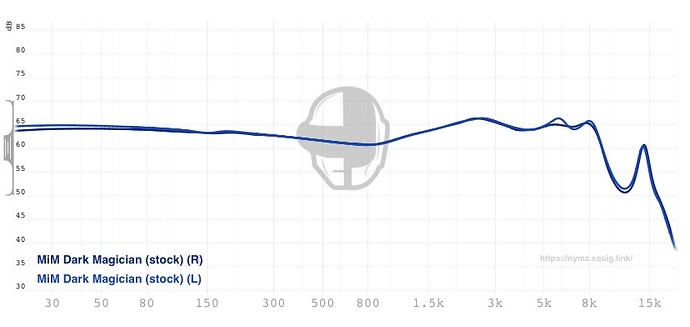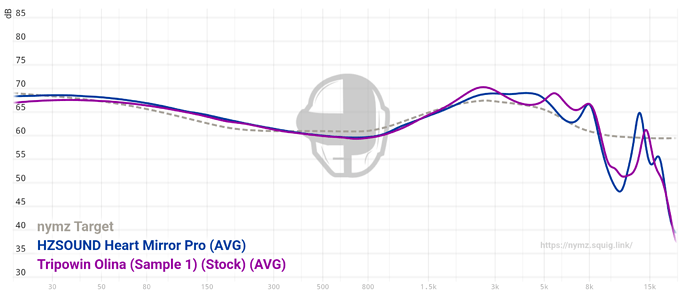Didn’t know that’s (point #2) what causes incoherency ![]() Learn something new everyday!
Learn something new everyday!
They are balanced between them, male might be an hair more forward. But balanced between them ![]()
It’s not. Incoherency is different speeds/timbres/whatever between drivers, that can be accentuated by tuning.
Think of a piano. Now the bass notes are too elevated, the middle ones are too dead but start scaling as you, until they they are too elevated again and then roll off the rest.
Instead of being balanced, you get a different piano everytime your hands move ![]() It’s not tonaly balanced to a point it is almost incoherent, without being. Just an analogy.
It’s not tonaly balanced to a point it is almost incoherent, without being. Just an analogy.
So dynamics?
No, but it’s all about balance. That’s the point.
That’s also the reason why people look at DM graph and their brain explodes ![]()
the sub par driver is definitely an important point haha. I agree with all your points although I would say 1) on its own is not too bad if the driver is competent such as in the Canon. the combo of 1 and 2 is super interesting though and something I never thought of so thanks for the teaching me something new!
Oh F*** yeah, I want that. ![]()
I wonder why it is necessary to make IEMs, on which then 100 filters must be placed in order to become listenable. Then an upgrade starts appearing on this model, disguised as SE, S, MK2, Pro etc. Sad and emptying your wallet! ![]()
![]() .
.
WoW they graph super similar…! I wonder if it’s the same driver on both ![]()
That is one way to look at it. Another way is that Olina is based on (and meant to replicate really) Tanchjim Oxygen, at a lower price point. In response to customer feedback HBB retuned Olina in a FR that is more to his tastes, which is the SE.
This is not as cynical as the 72 T2 variants
This is strange to be honest. The first 2 points (2nd o some degree) could as well apply to Olina OG that everyone knows you adore… So either the higher frequencies are more important than I think (and those are more prone to measurements errors) out those mythical technicalities and driver capability not shown on graphs at all ![]() so for me the lesson learned is to trust the graphs even less - maybe just for taking a big picture of general tonality to categorize v, u, w shaped, neutral or else
so for me the lesson learned is to trust the graphs even less - maybe just for taking a big picture of general tonality to categorize v, u, w shaped, neutral or else
This is part of the IEMs advertisement. In fact, the Chinese borrow technology and don’t have much of their own! The huge specs for a myth ![]() .
.
For a more complete picture about IEMs we have to account the vibration behavior in the time domain
Frequency response graphs tell us nothing about the time domain behavior of IEMs.
Waterfall and Decay charts might be helpful in this regard? I never considered them at all for IEMs. Interesting topic to dive into.
There are waterfall graphs used by some as far as I remember, but those were even harder for reading and interpretation. Also it seems to be very hard to simulate complex waveform of music (which is a sum of arising sound waves, fading waves + their harmonics) with a single tone testing.
But yikes, fr + waterfall are probably the best we can have on paper
I have been listening to the OG Heart Mirror for 3 days now. I must admit they aren’t that bad, with the good tips. I use Xelastec to bring up the bass; they still sound a bit thin to my taste, but the details are good on these; I still wish to sell them though, as I have better sets with me.
That always seemed like the summary on them. Probably the best cheap technical in its time.
So, due to my lack of restraint and will power (along with some enabling from my friend) I just bought the OG Dark Magician…![]()
![]() #magicwandsquad
#magicwandsquad ![]()
Nice can’t wait to hear your thoughts fellow Dark Knight. That’s a good friend for enabling you to this choice. Seems you have a liking for the dark side. It’s definitely up there as one of my favorites and one that will be with me for a long time to come.


